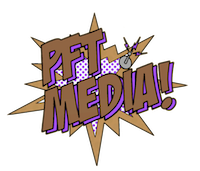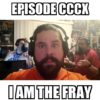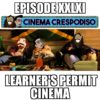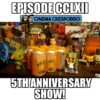 A transcript of episode 11 of Orlando Opinions with Mark Baratelli:
A transcript of episode 11 of Orlando Opinions with Mark Baratelli:
“A teensy full-service Starbucks location opened inside the Mall at Millenia Macys. This new addition means the mall now contains 3 Starbucks locations. I see this as one of two things: Macys, the dying chain, is scraping dying crying to get people into that Michael Kors halfway house or B: Starbucks requested the third one due to traffic, Millennia said hell to the no we have high end brands BEATING down our doors to get up in this bitch… just not on the middling unimpressive side with the Gap and Papyrus…. So the mall told Macys either put this Starbucks in between your Thalia jewelry case and UCF t-shirt section in the mens area or we’re kicking your dying ass out and turning it into a food hall and makers market because TRENDS!
On July 12th Mayor Dyer announced the City’s search for Orlando’s First Poet Laureate after a process was developed. Susan Lilley, a teacher and published poet, was selected and is being appointed by the Mayor as Orlando’s first Poet Laureate for a term of one year, with annual renewals by the Mayor for up to a three year term. The Poet Laureate’s contract includes a $3,000 annual honorarium.
The purpose of the Poet Laureate is to promote poetry and the appreciation of poetry among the public and inspire emerging generations of literary artists and readers of literature. Orlando’s Poet Laureate is the city’s official storyteller, who will reflect the diverse, inclusive spirit of our community.
Duties:
-
The Poet Laureate shall present original works of poetry at up to four of the Mayor’s and/or City’s annual events per year, as requested by the City of Orlando.
-
The Poet Laureate will present to local students/youth a minimum of six (6) times per year, one per City Commissioner’s district and will be featured in the United Arts’ directory of available education programs on www.UAArtsEd.com.
-
The Poet Laureate will work with The City of Orlando, United Arts and/or Burrow Press to facilitate press coverage for key events.
-
The Poet Laureate will be featured in an issue of United Arts’ bimonthly publication, Orlando Arts Magazine.
The website Bicycle Benefits has come to Orlando. It’s an organization that rewards cyclists for their regular physical activity, non-motorized movement with discounts at local shops and restaurants. The businesses are rewarded with new customers, free advertising, visibility and increased customer loyalty. Right now the site has one business signed up: Metro Express Pizza Cafe. This City is OBSESSED with talking about cycling… in one of the most dangerous city’s in the COUNTRY for cyclists. I think it’s fantastic. The less cars on these stupid streets the better. I think part of getting your drivers license should be riding a bike on a busy Orlando road. Everyone will UNDERSTAND the terror a cyclist goes through and how the driver, all the drivers, create it. I rode my bike every day to work a long time ago from downtown Orlando to Universal. The reason being it took an hour to sit on a plastic seat inside a LYNX bus… the same time it took to cycle the route. Anyways, it was terrifying on the busy streets.. Terrifying… Anyways the website is Bicycle Benefits.
This is a long story so sit back and calm the hell down or press the off button….
Two men will soon be buying, repairing, and selling some of the 434 old houses, one by one, in the Sanford Historic District in the hopes of improving and reviving the blighted district. They will acquire property, either by donation, options, outright purchase or in partnership with others. They will then sell them either as-is for a low price or post-refurbishment for a higher price.
The Sanford Residential Historic District was listed on the National Register in 1989 and contains buildings in a wide range of historic architectural styles including Craftsman, Prairie, Queen Anne, Folk Victorian, National, Colonial Revival, Spanish Eclectic, and Mission.
The first project for Charlie Hull and Hank Dieckhaus (the two men) is an 1880s era two-story single family-turned multi family home at 213 S Laurel Ave (MAP). Buyers can get it for $239,000 post-refurbishment or $79,000 as-is. The two men didn’t pay a dime for the property and the City forgave $289,000 in fines the house had accumulated over the years. The way they achieve the low purchase price is by using their non-profit, the Sanford Heritage Revolving Fund. The name says what they do: put the money they make from selling homes and lots back into buying homes and lots.
The Fund focuses on 3 groups of property: 1) Troubled single family or multifamily houses, 2) Larger distressed properties where there are opportunities for adaptive reuse; and 3) New construction on vacant historic neighborhood lots.
Homes purchased after the refurbishment can be moved into immediately. Homes purchased before the refurbishment come as-is and cost significantly less.
The two men are also buying up empty lots. According to the fund’s website, they will attain vacant lots and either sell the lot to a developer who will build a new construction house (Lord knows what it could look like) or build and sell a house themselves.
Pretty soon the Sanford Historic District may not appear historic anymore.
New Construction Worst Case Scenarios
-
Houses down, New Construction Up – Nothing is preventing developers from buying homes from these two men, knocking them down and filling the district with new construction. The City allows demolition of historic homes so long as it’s approved by their Historic Preservation Board.
-
Lots = New Construction – Per their website, every lot in that neighborhood that these two men purchase will become a new construction home project.
-
Buy and Wait – These two could acquire a bunch historic homes and lots and just sit on them for years until they find a developer who wants to buy all of them. There’s no law saying the developer can’t knock them all down and build new construction
One example of this happening is in Orlando is in 2016 when Adam Wonus bought several lots and homes in an old district near downtown, demolished the homes and cleared the lots and inserted about 30 new-construction horrors.
Adam Wonus said in a 2016 interview on 90.1 WMFE “My goal was simply to take vacant lots and run down homes and put something new in its place.” That’s what these two men are saying.
Wonus’ suburban style duplexes with front loading garages and double-squat palm tree landscaping was totally legal and broke no rules. However, what he did shook the neighborhood residents, angered lovers of downtown and raised flags with City employees so much that the City sped up the work they were already doing creating new duplex design standards.
This could happen to the Sanford Historic District.
The fund states that it will sell its homes to a buyer who agrees to preserve the integrity of the property. That’s double speak for no renters. 50% of the occupied homes in the Sanford Historic District are rentals. A requirement of anyone buying a lot or homes from these two men is to agree to their “single family covenant.” This thing means whoever buys the finished products must agree to never allow the homes to become rentals.
This sounds like a good thing. A neighborhood of home owners means everyone is invested in the community and their own properties. The tax base will rise and the City earns more income.
But this is not a good thing for those in need of low income housing. The neighborhood will change from an affordable housing area to a sort of walled off garden to which renters may never return. Central Florida was rated #3 worst area for low income residents to find affordable housing. This region has twice the national average in fact. Without these two men addressing and fixing the problem of decreasing affordable housing by over 200 homes, their project is not a completely wonderful thing.
Let’s call this what it actually is: gentrification.
Two men are given one home free and clear in a distressed rental-laden downtown Sanford neighborhood. These men will sell it as-is or post-refurbishment. Either way the money earned goes to purchasing (or being given for free) more vacant lots and historic homes. Pretty soon developers come in and these two men hand over a 15-block patch of historic homes and vacant lots to the developers. This sucks.”

 Cinema Crespodiso – #310 – I Am The Fray
Cinema Crespodiso – #310 – I Am The Fray Cinema Crespodiso – #319 – Delicious ‘N Appetizing
Cinema Crespodiso – #319 – Delicious ‘N Appetizing Cinema Crespodiso – Spoiler Bonus Episode – Ready Player One
Cinema Crespodiso – Spoiler Bonus Episode – Ready Player One Cinema Crespodiso – Spillover Bonus Episode – Look At This News
Cinema Crespodiso – Spillover Bonus Episode – Look At This News Cinema Crespodiso – #261 – Learner’s Permit Cinema
Cinema Crespodiso – #261 – Learner’s Permit Cinema Cinema Crespodiso – #262 – 5th Anniversary Show!
Cinema Crespodiso – #262 – 5th Anniversary Show!